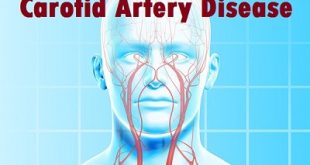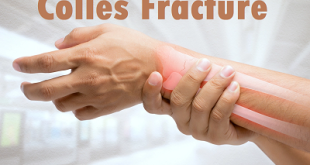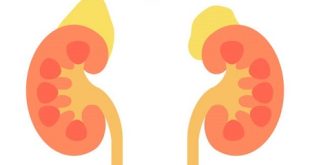Definition of Chronic obstructive pulmonary disease
COPD stands for chronic obstructive pulmonary (lung) disease. COPD is a term applied to a family of diseases that includes emphysema, chronic bronchitis, and emphysema due to alpha-1 antitrypsin deficiency. It usually progresses gradually, causing limited airflow in and out of the lungs.
COPD adds to the work of the heart. Diseased lungs might reduce the amount of oxygen that goes to the blood. High blood pressure in blood vessels from the heart to the lungs makes it difficult for the heart to pump. Lung disease can also cause the body to produce too many red blood cells, which might make the blood thicker and harder to pump.
Patients who have COPD with low oxygen levels might develop an enlarged heart (cor pulmonale). This condition weakens the heart and causes increased shortness of breath, and swelling in the legs and feet.
Chronic obstructive pulmonary disease
Types of chronic obstructive pulmonary disease
Types of Chronic obstructive pulmonary disease are as follows:
Chronic bronchitis
Chronic bronchitis is irritation and inflammation (swelling) of the lining in the bronchial tubes (air passages). The irritation causes coughing and an excess amount of mucus in the airways. The swelling makes it difficult to get air in and out of the lungs. The small, hair-like structures on the inside of the airways (called cilia) might be damaged by the irritation. The cilia are then unable to help clear mucus from the airways.
Bronchitis is generally considered chronic when you have: a productive cough (cough up mucus) and shortness of breath that lasts about three months or more each year for two or more years in a row. Your doctor might define chronic bronchitis differently.
Emphysema
Emphysema is the destruction, or breakdown, of the walls of the alveoli (air sacs) located at the end of the bronchial tubes. The damaged alveoli are not able to exchange oxygen and carbon dioxide between the lungs and the blood. The bronchioles lose their elasticity and collapse when you exhale, trapping air in the lungs. The trapped air keeps fresh air and oxygen from entering the lungs.
Risk factors OF COPD
Risk factors for COPD include:
Exposure to tobacco smoke: The most significant risk factor for COPD is long-term cigarette smoking. The more years you smoke and the more packs you smoke, the greater your risk. Pipe smokers, cigar smokers, and marijuana smokers also may be at risk, as well as people exposed to large amounts of second-hand smoke.
People with asthma who smoke: The combination of asthma, a chronic inflammatory airway disease, and smoking increases the risk of COPD even more.
Occupational exposure to dust and chemicals: Long-term exposure to chemical fumes, vapors, and dusts in the workplace can irritate and inflame your lungs.
Exposure to fumes from burning fuel: In the developing world, people exposed to fumes from burning fuel for cooking and heating in poorly ventilated homes are at higher risk of developing COPD.
Age: COPD develops slowly over the years, so most people are at least 40 years old when symptoms begin.
Genetics: The uncommon genetic disorder alpha-1-antitrypsin deficiency is the cause of some cases of COPD. Other genetic factors likely make certain smokers more susceptible to the disease.
COPD Causes
The primary cause of the chronic obstructive pulmonary disease is cigarette smoking or exposure to tobacco smoke. It is estimated that 90% of the risk for development of the chronic obstructive pulmonary disease is related to tobacco smoke.
The smoke also can be second-hand smoke (tobacco smoke exhaled by a smoker and then breathed in by a non-smoker).
Smoking causes COPD
Other causes of chronic obstructive pulmonary disease are:
- Prolonged exposure to air pollution, such as that seen with burning coal or wood and with industrial air pollutants
- Infectious diseases: Infectious diseases that destroy lung tissue in patients with hyperactive airways or asthma also may contribute to causing this COPD.
Damage to the lung tissue over time causes physical changes in the tissues of the lungs and clogging of the airways with thick mucus. The tissue damage in the lungs leads to poor compliance (the elasticity, or ability of the lung tissue to expand).
The decrease in elasticity of the lungs means that oxygen in the air cannot get by obstructions (for example, thick mucus plugs) to reach air spaces (alveoli) where oxygen and carbon dioxide exchange occurs in the lung.
Consequently, the person exhibits a progressive difficulty, first coughing to remove obstructions like mucus, and then in breathing, especially with exertion.
Symptoms of Chronic obstructive pulmonary disease
As the years go by, a majority of individuals mistake increased coughing and breathlessness as part of aging.
COPD can develop for years without one realizing periods of shortness of breath, until the more advanced stages of the disease.
The signs for COPD vary in each individual, but the most common ones include:
- Tightness in the chest
- Wheezing
- Feeling tired especially when doing daily chores or exercising
- Increased breathlessness
- Frequent coughing either with sputum or without
- Shortness of breath
- Swelling in ankles, feet or legs
- Recurrent respiratory infections
- Unintended weight loss
- Lack of energy
- The blueness of the lips or fingernail beds called cyanosis.
COPD complications
With COPD, you may have other health problems such as:
- Irregular heartbeat (arrhythmia)
- Need for breathing machine and oxygen therapy
- Right-sided heart failure or cor pulmonale (heart swelling and heart failure due to chronic lung disease)
- Pneumonia
- Collapsed lung (pneumothorax)
- Severe weight loss and malnutrition
- Thinning of the bones (osteoporosis)
- Debilitation
- Increased anxiety
Diagnosis and test
- Your doctor will diagnose COPD based on your signs and symptoms, your medical and family histories, and test results.
- Your doctor may ask whether you smoke or have had contact with lung irritants, such as second-hand smoke, air pollution, chemical fumes, or dust.
- If you have an ongoing cough, let your doctor know how long you’ve had it, how much you cough, and how much mucus comes up when you cough. Also, let your doctor know whether you have a family history of COPD.
- Your doctor will examine you and use a stethoscope to listen for wheezing or other abnormal chest sounds. He or she also may recommend one or more tests to diagnose COPD.
Pulmonary Function Tests
Pulmonary function tests measure how much air you can breathe in and out, how fast you can breathe air out, and how well your lungs deliver oxygen to your blood.
The main test for COPD is spirometry. Other lung function tests, such as a lung diffusion capacity test, also might be used. Read Pulmonary Function Tests for more information.
Spirometry for Chronic obstructive pulmonary disease
During this painless test, a technician will ask you to take a deep breath in. Then, you’ll blow as hard as you can into a tube connected to a small machine. The machine is called a spirometer.
The machine measures how much air you breathe out. It also measures how fast you can blow air out.
Spirometry test
- Your doctor may have you inhale, or breathe in, medicine that helps open your airways and then blow into the tube again. He or she can then compare your test results before and after taking the medicine.
- Spirometry can detect COPD before symptoms develop. Your doctor also might use the test results to find out how severe your COPD is and to help set your treatment goals.
- The test results also may help find out whether another condition, such as asthma or heart failure, is causing your symptoms.
Other Tests
Your doctor may recommend other tests, such as:
A chest x-ray or chest CT scan: These tests create pictures of the structures inside your chest, such as your heart, lungs, and blood vessels. The pictures can show signs of COPD. They also may show whether another condition, such as heart failure, is causing your symptoms.
An arterial blood gas test: This blood test measures the oxygen level in your blood using a sample of blood taken from an artery. The results from this test can show how severe your COPD is and whether you need oxygen therapy.
Treatment and medications
Treatment may include:
Bronchodilator medication: To open the airways. This medication is best administered by a puffer
Corticosteroids: Medication to reduce inflammation and swelling of lung tissue. This is usually given by a buffer to minimize the risk of side effects
Expectorants: Medication to loosen the phlegm and make it easier to cough up
Oxygen therapy: It prescribed for many people with chronic lung disease who have low blood oxygen levels. The body can tolerate low levels of oxygen for short periods of time, but low levels of oxygen for long periods of time can cause problems in your vital organs. Home oxygen therapy helps return your blood oxygen levels to normal, reducing the damage to your vital organs. Oxygen therapy is usually prescribed to prolong life and it may also improve quality of life. While the use of oxygen may relieve shortness of breath, in many cases, it does not
Treatment for chest infections: Such as antibiotics to treat existing infections, and pneumonia and flu vaccinations to reduce the risk of infections in the future
Pulmonary rehabilitation: These programs consist of an individual assessment followed by supervised exercise training and education. Programs usually run for about eight weeks and at the end of the program, there is normally re-assessment and referral to an ongoing maintenance exercise program such as Lungs in Action
Surgery: A technique called lung volume reduction surgery is a possible option for a small number of people with COPD. Affected portions of diseased lung tissue are surgically removed, which allows the healthier tissue to better expand and contract. Another possible technique involves the insertion of endobronchial valves to achieve lung volume reduction
Ongoing monitoring: A person with COPD needs regular medical check-ups.
Prevention of Chronic obstructive pulmonary disease
If you are concerned about getting COPD, there are steps you can take to protect yourself.
- If you are a smoker, stop smoking. Quitting smoking is the single most important thing a smoker can do to live a longer and healthier life. The American Lung Association has many programs to help you quit for good.
- If you don’t smoke, don’t start. Smoking causes COPD, lung cancer, heart disease, and other cancers.
- Avoid exposure to second-hand smoke. Make your home smoke free. You’ll not only protect yourself but your family too. Learn about your rights to a smoke-free environment at work and in public places.
- Be aware of other dangers. Take care to protect yourself against chemicals, dust, and fumes in your home and at work.
- Help fight for clean air. Work with others in your community to help clean up the air you and your family breathe.
 Diseases Treatments Dictionary This is complete solution to read all diseases treatments Which covers Prevention, Causes, Symptoms, Medical Terms, Drugs, Prescription, Natural Remedies with cures and Treatments. Most of the common diseases were listed in names, split with categories.
Diseases Treatments Dictionary This is complete solution to read all diseases treatments Which covers Prevention, Causes, Symptoms, Medical Terms, Drugs, Prescription, Natural Remedies with cures and Treatments. Most of the common diseases were listed in names, split with categories.








this is excellent but include geographical outlets or hospitals where treatment/help can be obtained
Please let us know your residing country accordingly the hospitals will be discussed in the comment section.
very good. i think all those have copd must have this app. I was smoking heavily. 15 years passed I left smoking. Now I am 69. and I am healthy. I breathe well. claiming 5 floor everyday. Thank God I left smoking.
Four years ago I experienced a severe breathing and wheezing problem that my doctor diagnosed as chronic bronchitis with dust allergy. A year later, it worsened and I was diagnosed of COPD. I came across Herbal HealthPoint [ww w. herbalhealthpoint. c om] December, 2018 and learnt about their successful herbal therapy for COPD. I immediately started on the COPD treatment; few weeks into the treatment, i began to notice a reduction in symptoms till it all vanished. I feel better and breath better. I Just wanted to share for people suffering from this horrible lungs disease.
I am in Lagos, Nigeria, this is commendable. show outlets/hospitals where help can be available
Excellent guide line for precautions, causes, theraphy and medication for rehabilitation. I am greatful for your such great efforts for the humanity.
With Best Regard
Khalid
your medical teaching and diagnosis is very clear and well understood. You have really helped me with it. Thanks and God bless you.
sir u had not given any medicines for this disease
Appropriate medicines should be prescribed by the doctor.
How here are few medicines which can be used for the COPD but consult a doctor before taking this medicine?
aclidinium (Tudorza)
arformoterol (Brovana)
formoterol (Foradil, Perforomist)
glycopyrrolate (Seebri Neohaler)
indacaterol (Arcapta)
olodaterol (Striverdi Respimat)
salmeterol (Serevent)
tiotropium (Spiriva)
is it adviceable to give oxygen supplement to a copd person ,as that would let to a carbon dioxide retention
Four years ago I experienced a severe breathing and wheezing problem that my doctor diagnosed as chronic bronchitis with dust allergy. A year later, it worsened and I was diagnosed of COPD. I came across Herbal HealthPoint (ww w. herbalhealthpoint. c om) December, 2018 and learnt about their successful herbal therapy for COPD. I immediately started on the COPD treatment; few weeks into the treatment, i began to notice a reduction in symptoms till it all vanished. I feel better and breath better. I Just wanted to share for people suffering from this horrible lungs disease.
l want to know the medicine to treat it.
short-acting bronchodilators include: albuterol (Proair HFA, Ventolin HFA), levalbuterol (Xopenex), ipratropium (Atrovent HFA), albuterol/ipratropium (Combivent Respimat)
corticosteroids: Fluticasone (Flovent), Budesonide (Pulmicort), Prednisolone
Note: Please consult a doctor for an appropriate prescription of Medicines.
Four years ago I experienced a severe breathing and wheezing problem that my doctor diagnosed as chronic bronchitis with dust allergy. A year later, it worsened and I was diagnosed of COPD. I came across Herbal HealthPoint (ww w. herbalhealthpoint. c om) December, 2018 and learnt about their successful herbal therapy for COPD. I immediately started on the COPD treatment; few weeks into the treatment, i began to notice a reduction in symptoms till it all vanished. I feel better and breath better.
I am not sure of the cause of COPD emphysema in my case. I smoked pack a day for 12 or 13 years, but quit 40 years ago. I have been an outdoor person all my adult life. Coughing started last summer producing thick mucus, greenish tint to clear. I tried prednisone and antibiotics, but no change. X-rays are negative, heart lungs and blood and serum chemistries all are normal. I have lung calcification from childhood bout with histoplasmosis. I am 75 years old and retired.My current doctor directed me to totalcureherbsfoundation .c om which I purchase the COPD herbal remedies from them ,they are located in Johannesburg, the herbal treatment has effectively reduce all my symptoms totally, am waiting to complete the 15 weeks usage because they guaranteed me total cure.
will people vaping do anything to people with c o p d will it affect us thank you
Both people who currently do not smoke (non-smokers) and people who have never smoked (never-smokers) can get COPD. … Exposure to secondhand smoke: Being exposed to secondhand smoke as an adult can lead to COPD. Exposure to air pollution: You can develop COPD if you are exposed long-term to air pollution.
got it